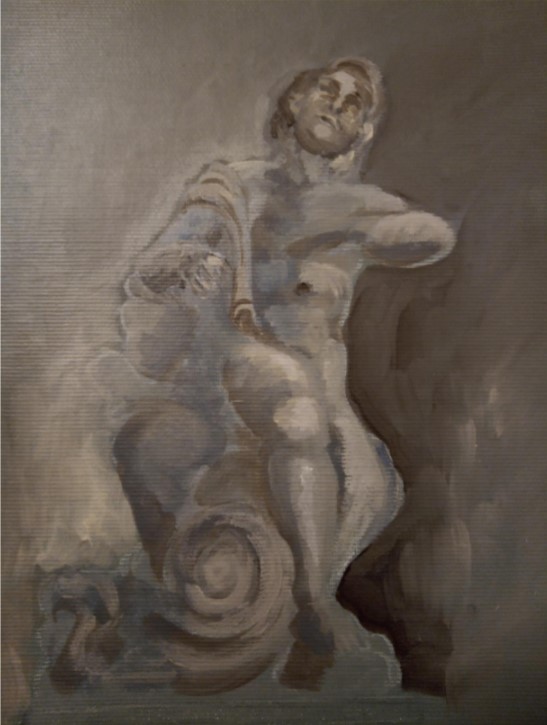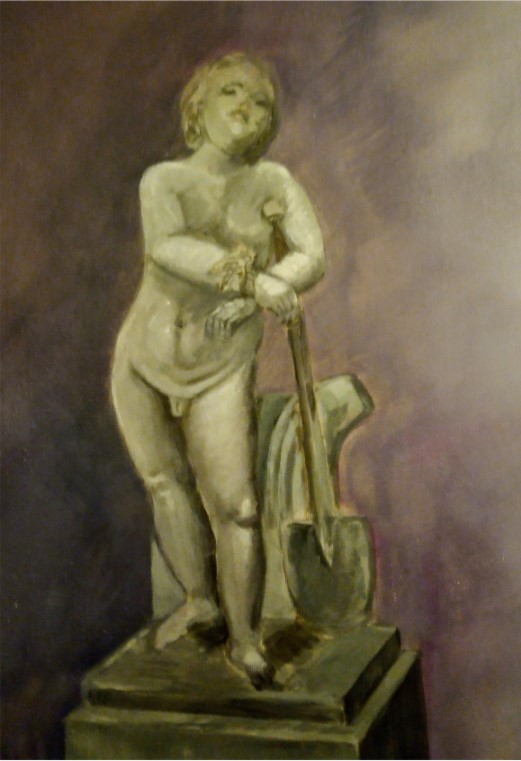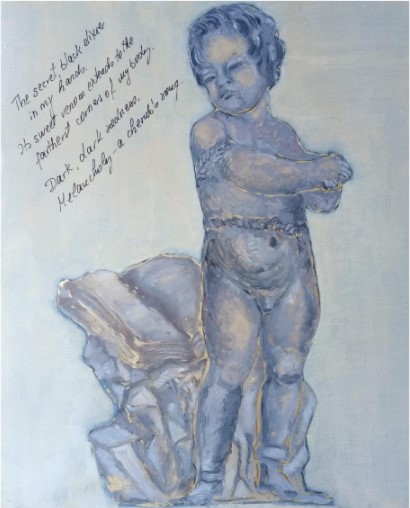QUartET:
the 4 temperaments
The Sanguine
On some days the hazy, milk-white light draws me into a strange fluidity: it’s the wisdom of a wing-like, deceitful surface.
I’m made for this transparency, though, for its luminous saga at the edge of known words. A hibernaculum of unseen snow, yet to be made into syllables; a no man’s land in the indistinguishable whiteout.
As if I could truly speak? My sentences are unborn, prowling about, awaiting favorable moments and lifting words.
This windmill of meaning, on hooks of air, grinds away at the edge of the clouds.
I hold on to nothing and nothing holds me.

I don’t really mind—mine is a floating realm; let each man think what they will.
The Choleric
You ask what the fire is that burns slowly inside my arteries: it’s the sun, hidden and silvery-golden in its imperfection.
An element of unknown sparks; darkness that mollifies and enrages.
The voice of fire blows through me, a deafening, ardent trumpet, rousing skies and stars and piercing the obscurity with its imperiousness.

I am inside this fervid movement; I am inside the dome that arches beyond understanding, the feathery, fiery wings above an intention of flight.
Words command us kindness, just like a parting of the seas.
I tread along inside the elevation of my boundaries: simple, measured steps that turn out to be incinerated voices.
The Phlegmatic
All is reflection and a huge mirror is hidden in the entrails of the earth. Nothing maintains our memory like water—fluvial sagas, eggshells of light.

Stillness, different from its meaning: silence that overpowers us. We keep still, awaiting the penumbra of a well.
The long wait for shards of light, for a stream that levels off into the enigma of an even surface. A manifestation of the stars and their turbulent flow: driftwood of the spheres above.

This still water though carries a larger echo—sounds of oars, surreptitiously weaving themselves into currents and the distant line of the tide closing in. A beachhead. The nocturnal ocean of our brain.

I’m here, on the last coast of denial, in a monologue of endless and seditious waters.
The Melancholic
He laughed and said: “It must be ink.”
Dark and serious—ink, that you would find inside an old book, in minute calligraphy.
Dark ink against the golden sheet of an illuminated manuscript.
I hold the secret, black elixir in my hands, hidden from view.
While others may pretend it doesn’t exist, its sweet venom extends to the farthest corners of my body, and makes me hum.
Dark, dark sadness.
Melancholy—a cherub’s song.
Irina Moga and Tatiana Arsénie
What is the significance of this work to you?
This work is a dreamy interpretation of the four traditional temperaments—the sanguine, the choleric, the phlegmatic, the melancholic—attempting a possible foray into the human psyche via visual art and prose poems.
The two of us asked ourselves whether the restraints depicted on the bodies of the four characters represented suggest that we are forever bound to our temperaments at birth; we did not reach any conclusion in the end.
What is the significance of the form you chose for this work?
Our intent was to create a work of art of an experimental nature, in a form that may not have been used before: poems applied directly to the canvas, blending in with the painting—the work of two authors, echoing the same theme.
What was your process for creating this work?
Tatiana was planning a series of four paintings inspired by the work of the XVIIIth century German sculptor Johann Gottfried Knöffler. She was a frequent visitor at Bode-Museum in Berlin where Knöffler’s sculptures—four cherubs, each representing one of the traditional temperaments are located.
Tatiana thought the two of us could work together, even if 4,021 miles apart—and I said “yes” to her idea.
She created the initial sketches on cardboard and canvas and used gold foil in two of the paintings to light up the background. The gold foil, to which Tatiana applied her Byzantine art skills, signifies the celestial part of our being.
The process of embedding words into the painting was time consuming and it was done in rotring pen.
It was important to me that verses were written in Tatiana’s calligraphy—a natural extension of her brush; in practical terms, within the texture of these paintings, we meant for her handwriting to evoke the art of illuminated manuscripts where words, calligraphy and painting converged.
In terms of the writing process—I went with the assumption that each of the temperaments relates to one of the fundamental elements—air for the sanguine, fire for the choleric, water for the phlegmatic and earth for the melancholic.
Then I started to record the words of each of the four cherub-temperaments as they flowed to me, in a juxtaposed confessional.
Irina Moga is a Canadian writer and the author of four poetry books. Her latest poetry collection, Sea Glass Circe, was selected for an official book launch through Toronto LitUp! and Toronto International Festival of Authors (TIFA) in 2020.
Irina’s next book, a collection of poems in French, is forthcoming with Éditions L’Harmattan in France. Her work has appeared in literary magazines in Canada and the US.
Web: http://www.irinamoga.com | Twitter: http://www.twitter.com/pictopoems
Tatiana Arsénie was born in a family of artists in Romania and became a dentist before emigrating to Berlin, Germany and working full-time as an artist.
Her training includes techniques in printing, Byzantine art techniques, drawing and painting and she was part of numerous individual and group exhibitions.
A series of projects carried out from 2007 to 2016, among which “gezeichnet.Pankow” (drawn.Pankow) resulted in several collections of drawings that were well received by the public and led to the publication of Tatiana’s two books: “gezeichnet.Pankow”(2019) and “Pictopoems of Berlin”(2018).
Web: http://atwork-tatiana.blogspot.com
Instagram: https://www.instagram.com/artwork_tatiana_arsenie/



